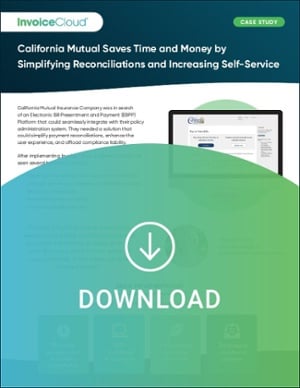The Benefits of a Reconciliation Tool for Insurance Organizations
 Steve Schult
Steve Schult

Despite being a necessity for insurance carriers, reconciliations can become a costly and time-consuming process, one that leaves insurance organizations vulnerable to critical errors and needlessly consumes employee time.
Fortunately, these challenges don’t have to be a reality for insurers: with the right reconciliation tool for insurance, carriers can tackle this essential process more quickly, efficiently, and accurately than ever before.
The challenges of reconciliations for insurers
For insurers, reconciliations pose a challenge that’s all too familiar. It’s traditionally difficult to reconcile an insurance organization’s bank account with its collections system – this misalignment is usually what causes reconciliations to become complicated, time-consuming, and susceptible to manual oversight.
Without a tool to line up chargebacks with what carriers see on their bank statement, there’s no way for insurance organizations to know how and when they should expect these payments in their accounts.
For example, your organization could receive a chargeback for what looks like one $3,000 deposit on paper. In actuality, this sum could be made up of two payments of $1,500 from two different payers, or three payments of various amount adding up to $3,000.
Unless your insurance organization has a comprehensive reconciliation tool, you’re left in the dark – or, at the very least, left to do the manual sleuthing yourself.
A critical process like reconciliations demands the best tools possible. Your organization can only stand to benefit from an online payment solution that makes it easy for you to serve your customers and reconcile your various accounts.
Here’s what to look for in a fully enhanced reconciliation tool to prevent errors, save employee time, and keep internal efficiencies consistent.
Easily sync up with bank statement activity
The ideal reconciliation tool should get right to the crux of the issue: it should enable your team to easily create reports that match your bank statement dates.
Look for a solution that utilizes built-in logic to group amounts by date activity – this gives insurers the ability to display results for a specified date range, according to how and when premiums, chargebacks, refunds, and rejected payments are expected to impact a designated bank account.
Convenient links to relevant detail
Researching chargeback discrepancies is typically a cumbersome task. The process often requires constant switching between tabs, screens, and even various tools to get all the information you need.
Understandably, insurers want to be able to do more on one tool.
When vetting online payment solutions, look for a reconciliation tool that offers a detailed view without having to leave the reconciliation report. The functionality should allow you to click embedded links to get relevant information immediately, so that your team can quickly and easily view or export detailed information.
Multiple ways to filter results
Another feature of a great reconciliation tool should be a filter functionality, which would allow insurance billing teams to focus on:
- Credits and debits to one or more transaction accounts
- Certain transaction categories
- Certain invoice types
- Or a combination of all three filters
This kind of advanced search function makes information easier to find and should provide more detail and context across the reconciliation process. Ultimately, a feature like this can save hours of weekly staff time and safeguard against manual errors.
Invoice Cloud’s new reconciliation tool for insurance premiums
As with everything we do at Invoice Cloud, we’ve strived to make the reconciliation process as easy for our 150 insurance clients as possible. So, when our customers spoke up about the ways we could improve our reconciliation functionality, we listened.
Invoice Cloud now offers a premium reconciliation tool that makes it easier than ever to match up funds on an insurance organization’s bank statement. The new tool lines updates, account numbers, debits, credits, and balances, providing these granular details (and more) all within one easy-to-navigate interface.
Overall, we’ve been thrilled to hear positive feedback about the new premium reconciliation tool.
According to one customer, Invoice Cloud’s streamlined reconciliations have saved their team up to 15 hours a week. 
And the Invoice Cloud platform doesn’t stop at making reconciliations easier. California Mutual Insurance Company has seen a 15x increase in paperless billing enrollment and a significant decrease in mailed in payments since month one of working with Invoice Cloud.
To see the full results of the California Mutual’s successful implementation with Invoice Cloud, download the free case study today.



